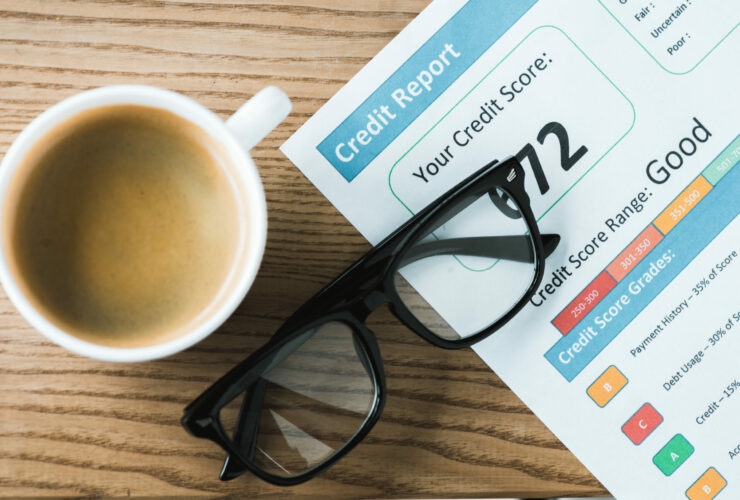What to Do When Your Fixed Rate Ends?

At the end of your fixed term, your home loan will typically revert to your lender’s standard variable rate. This transition can have financial implications, as standard variable rates tend to be higher than other deals on the market. Staying with your current lender may result in paying extra in interest, commonly referred to as loyalty tax. Well, you are not at a dead end. There are a few things you can do when your fixed rate is nearing its end.
Preparing for Your Fixed Term’s End
To ensure you secure a competitive deal on your home loan, it’s crucial to review your options before your fixed term ends. Start comparing rates and offers. You can do this as early as three months prior to expiration. By doing so, you can explore the possibility of switching lenders or renegotiating terms with your current lender to obtain a better rate.
Can You Extend Your Fixed Term?
Extending your fixed term is unlikely, especially if interest rates have increased since you initially secured the loan. However, you may have the option to fix your rate again at the current rates offered by lenders. It’s essential to carefully evaluate the financial impact of extending your fixed term and consider seeking advice from experts to make an informed decision.
Choosing Between Variable or Fixed Rate Home Loans
The choice between a variable or fixed rate home loan depends on your individual circumstances and needs. Variable rate loans often offer lower interest rates and more flexibility in terms of loan features, such as offset accounts, redraw facilities, and uncapped additional repayments. Fixed rate loans, on the other hand, provide the stability of consistent repayments but may limit access to lower interest rates if market rates decrease. Split rate loans offer the best of both worlds, allowing you to allocate a portion of your loan to a fixed rate and the remainder to a variable rate.
What are Variable Rate Home Loans?
Variable rate home loans can be advantageous due to their lower interest rates and greater flexibility. They offer access to additional loan features, the ability to make uncapped extra repayments, and potential interest rate decreases when the cash rate drops. Furthermore, refinancing is often more straightforward with variable rate loans.
What are Fixed Rate Home Loans?
Fixed rate home loans provide stability and protection against interest rate increases. While they offer predictable repayments, they may restrict extra repayments, loan features like offset accounts, and the ability to benefit from lower interest rates if they drop during the fixed term. It’s crucial to weigh the pros and cons before committing to a fixed rate loan.
What are Split Rate Home Loans?
If you desire both stability and flexibility, a split rate home loan can be an attractive option. With a split rate loan, you can allocate a portion of your loan to a fixed rate and the remainder to a variable rate. This allows you to benefit from predictable repayments while also taking advantage of potential interest rate decreases and additional loan features.
What If Interest Rates Have Risen?
In a scenario where interest rates have increased when your fixed period ends, there are still competitive options available. While your repayments are likely to rise, it’s essential to explore the rates offered by your lender to new customers. Requesting a rate match can potentially save you from overpaying on your home loan. Additionally, consider researching other lenders who may provide more competitive deals. Even a slightly lower interest rate can result in significant savings over time.
Understanding Rising Mortgage Repayments
In November 2020, the Reserve Bank of Australia (RBA) dropped the cash rate to stimulate the economy, resulting in historically low home loan interest rates. However, to manage inflation, the RBA began gradually increasing the cash rate from May 2022. As a result, borrowers are likely to experience rising mortgage repayments until the RBA achieves its target inflation rate of 2-3%.
Preparing for Higher Repayments
To proactively manage the potential impact of higher repayments when your fixed term ends, consider the following steps:
Start comparing home loans today
Before your fixed term ends, take the initiative to compare different home loan options. By doing so, you can ensure you’re not missing out on a more competitive deal. Conduct thorough research to determine which loan type—fixed, variable, or split—aligns best with your needs and helps you minimize your repayments. Comparing multiple loan products can be time-consuming. It is best that you employ the help of an expert mortgage broker. This will save you time and ensure that you are not missing any great offer from lenders.
Get help from the experts
It’s beneficial to consult a home loan specialist before your fixed rate period expires. These specialists can provide personalised guidance and help you determine the right course of action based on your financial goals and circumstances. Additionally, seeking advice from a financial advisor can provide valuable insights into your specific situation.
Review your household budget
Evaluate your household budget to identify areas where you can cut costs before your home loan payments increase. Look for opportunities to save on necessities such as groceries, gas, and utilities. Consider contacting your providers to explore potential discounts or better deals. Additionally, reassess your discretionary spending on items like takeaway food and entertainment to free up space in your budget.
Make extra repayments
While fixed rate loans may have limitations on extra repayments, they often allow you to make additional repayments up to a certain limit. Taking advantage of this feature can provide you with a buffer when interest rates rise. By reducing your outstanding loan amount, you can lower your future repayments and decrease the overall interest paid.
By following these steps, you can better prepare yourself for the potential impact of higher repayments when your fixed term ends. Taking proactive measures and staying informed will enable you to make informed decisions that align with your financial well-being.
In conclusion, when your fixed rate term ends, it’s crucial to review your options, consider refinancing, and assess the best loan type for your circumstances. By understanding the implications of the end of your fixed term, you can navigate the transition smoothly and secure a competitive deal that suits your needs. If you need help going through all the next steps, our home loan experts are ready to jump in to be of service to you. Give us a call and let’s discuss your options.



